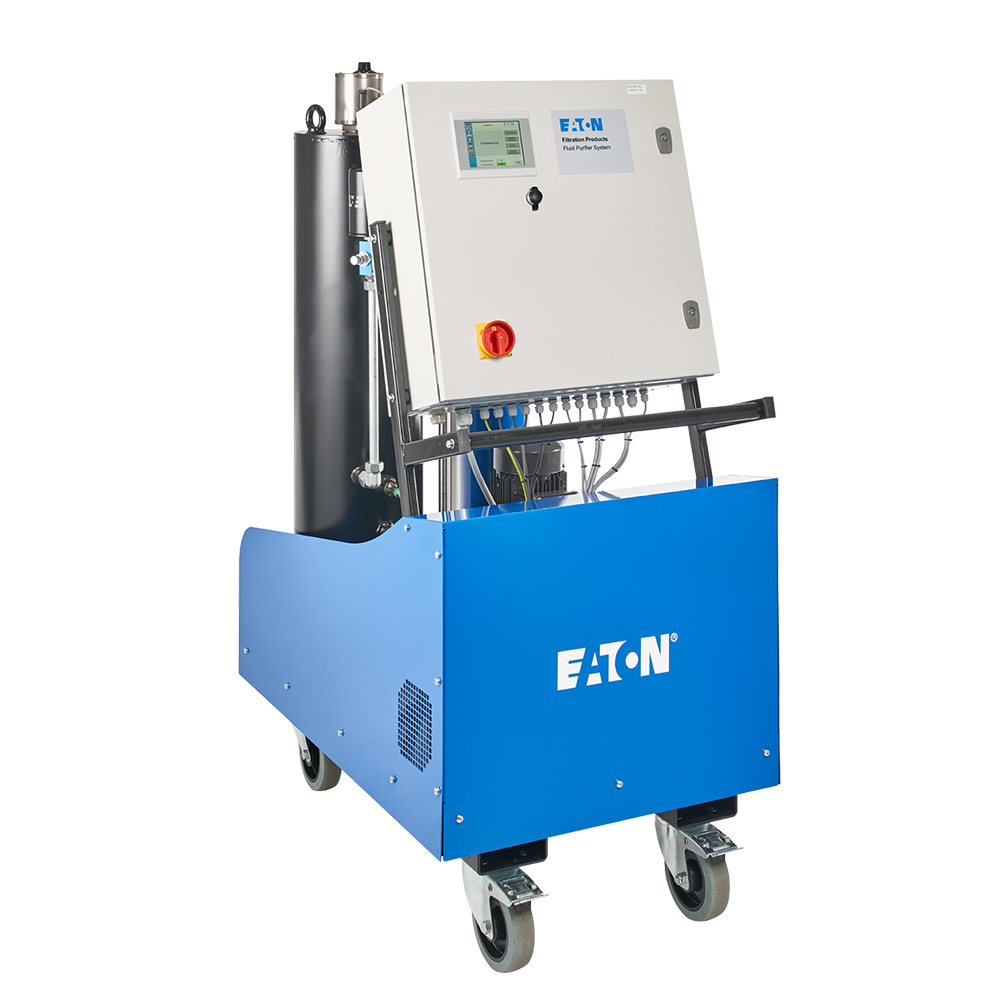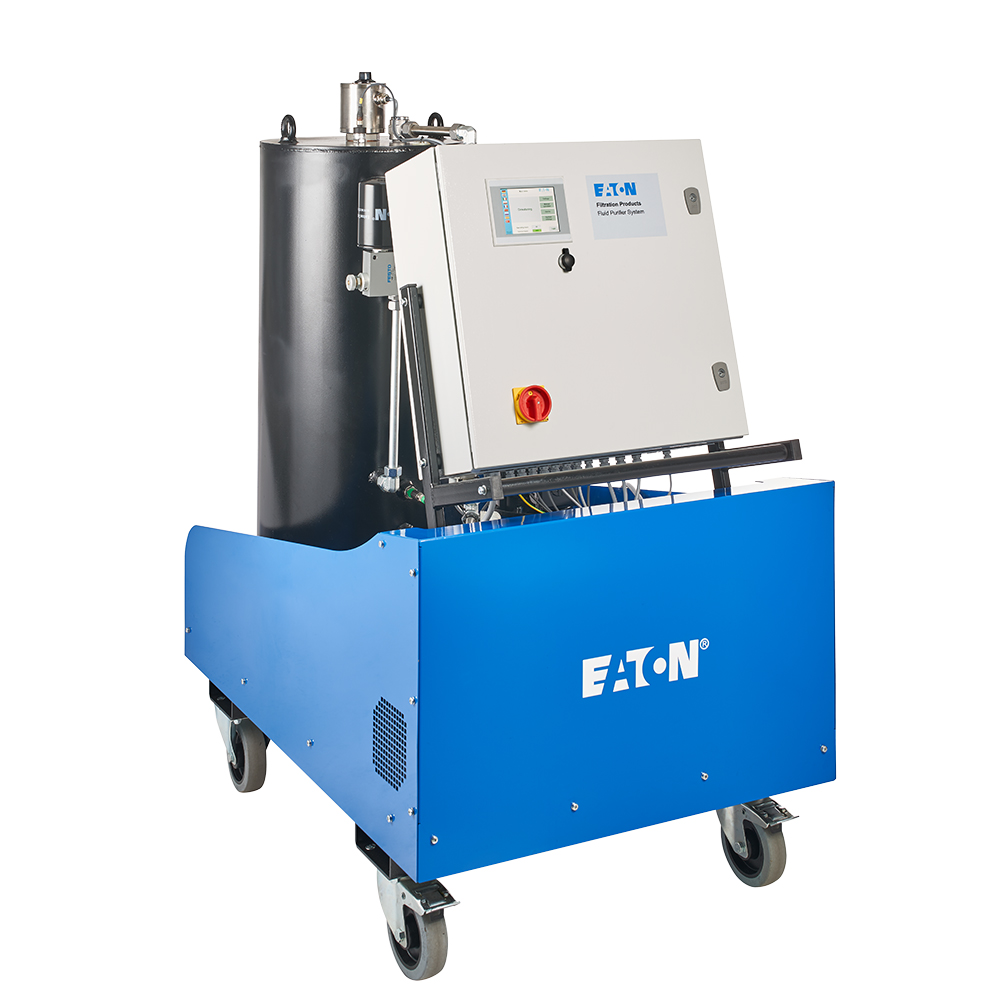Mobile off-line fluid cleaning systems
Eaton’s fluid purifier systems remove free, emulsified and dissolved water, free and dissolved gases, and solid contaminants to increase reliability, life, and efficiency of systems. They have been developed for different viscosity ranges, from transformer to heavy gear lubricating oils. The mobile fluid cleaning systems in the IFPM series are available in two standard sizes with flow rates of 7.9 gal/min (30 l/min) and 18.5 gal/min (70 l/min). The IFPM fluid purifier systems are fully automated, PLC-controlled compact enough for use in confined areas. The standard installed water sensor WSPS 05 allows a permanent control of the water saturation of the fluid.
Effects of water contamination
Water is one of the most common contaminants and the second most destructive besides particulate contamination. Some of the most damaging problems water contamination can cause are:
Fluid breakdown
- Additive depletion
- Reduction of the lubrication properties of the fluid
- Oil oxidation
Internal corrosion
Abrasive wear in system components
Reduced dielectric strength
IFPM fluid cleaning system technology
Vacuum evaporation with inert gas is the most effective water removal method for fluid cleaning systems. This method combines high water separation rates with an efficient use of energy, and allows the drying process to take place even below the saturation point of the prepared fluid. By contrast, conventional vacuum evaporation only brings the water content of the fluid to the same level as that of the water vapor in the surrounding atmosphere.
The IFPM fluid purifier systems are fully automated, PLCcontrolled compact enough for use in confined areas. The WSPS 05 sensor permanently monitors the water saturation in a purified fluid. A ventilation filter with silica gel dries the inflowing air, increasing the efficiency of the cleaning system even in environments with high humidity levels. The VS5 electronic contamination sensor provides the optimal use and maintenance scheduling of the particle removal filter element.
Operating principle
The contaminated fluid is drawn into the Fluid Purifier System using a vacuum
The fluid passes a heater, which raises the temperature in order to increase the water removal process
Fluid reaches the vacuum chamber through a two-port magnetic valve
A large free surface is created by packing material and the water is absorbed by the air
The humid air is released to the atmosphere with a vacuum pump through an oil mist separator
The fluid is pumped back into the oil reservoir through a high efficiency fine filter

